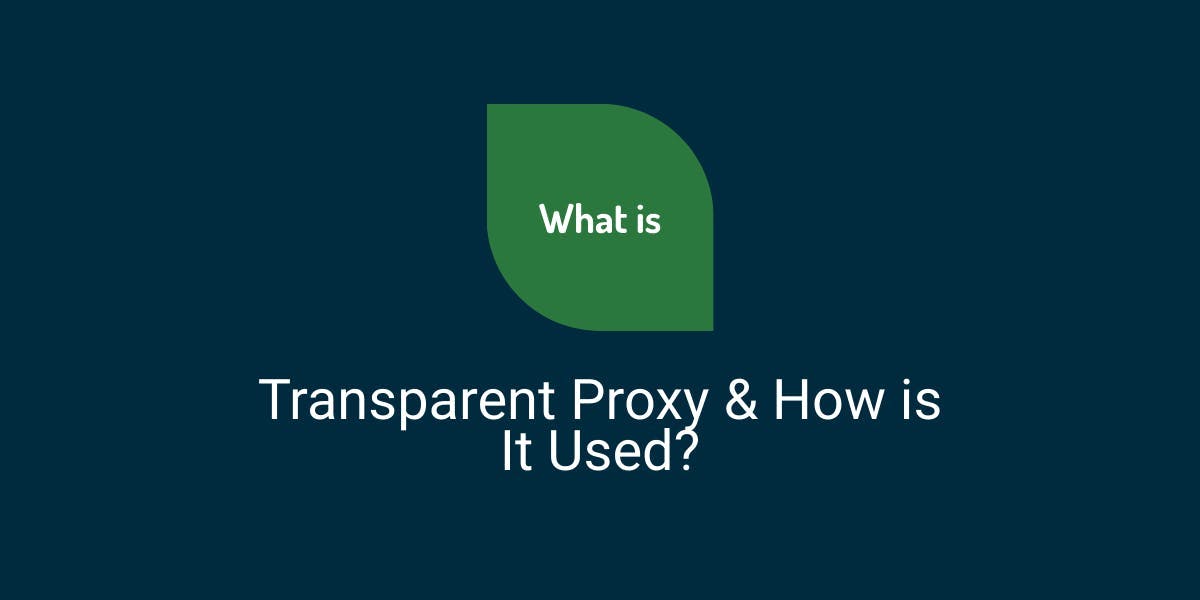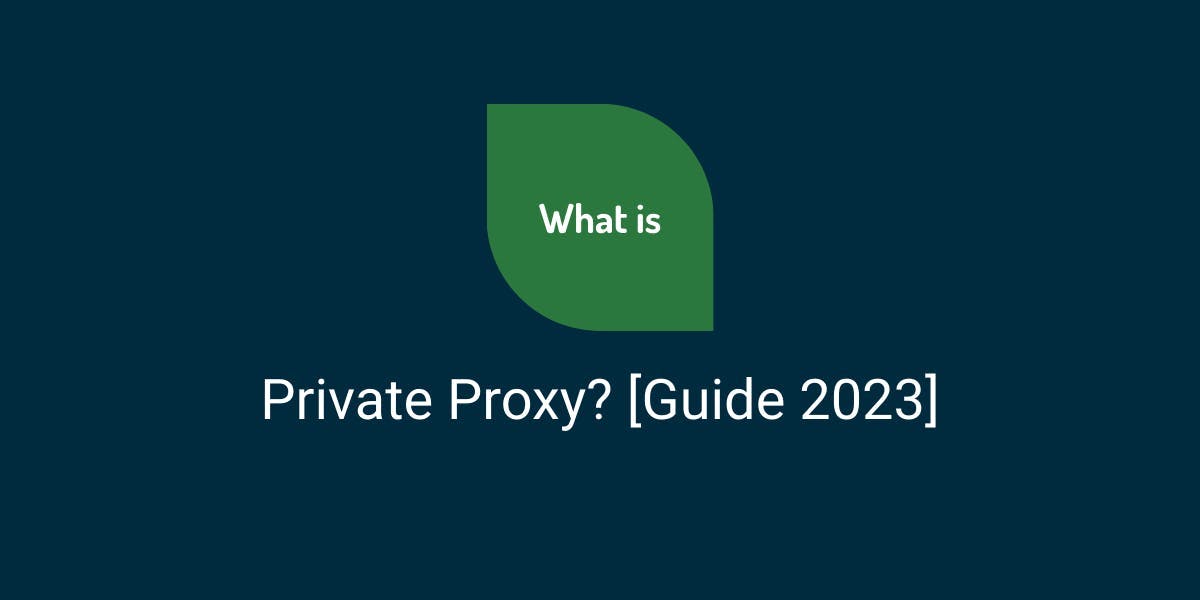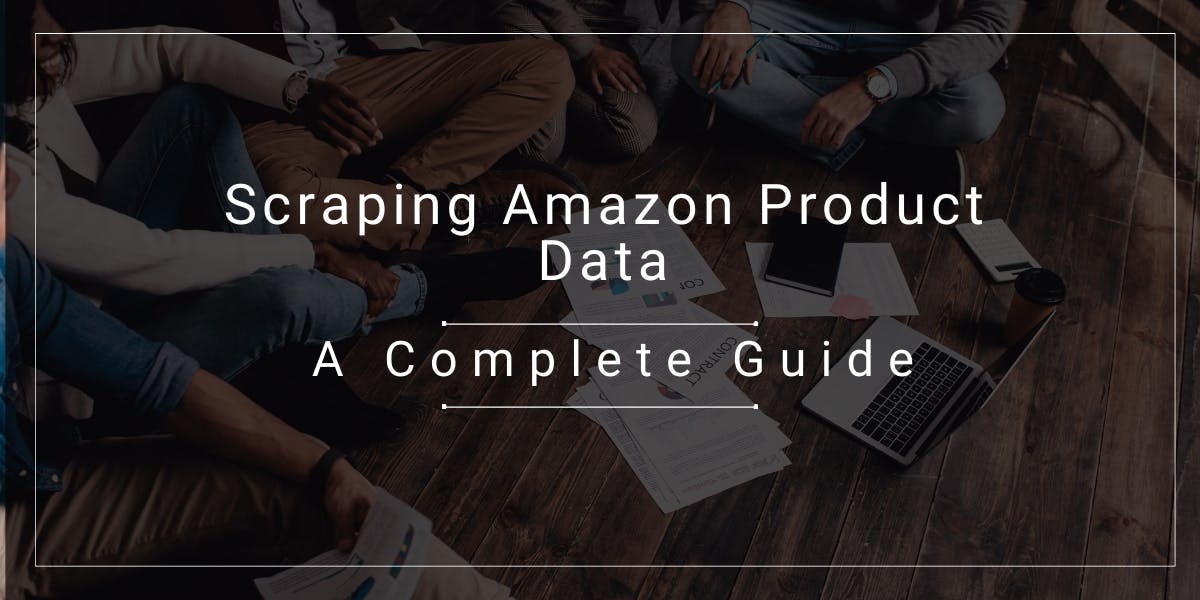What is a Transparent Proxy & How is It Used?
Flipnode on May 25 2023

Chances are, you have encountered transparent proxies at some point without even knowing it, even if you are unfamiliar with what they are. Web servers often use transparent proxies to monitor and control incoming internet traffic. Transparent proxies are commonly found in public Wi-Fi hotspots and workplace networks as they offer a convenient solution for tasks such as user authentication, caching, load balancing, and content filtering.
In this article, we will take a closer look at transparent proxies, examining their functions, uses in business, and methods of detection.
How does a transparent proxy work?
A transparent proxy has various aliases, including implicit proxy, forced proxy, intercepting proxy, or inline proxy. While it functions as a mediator between clients and web servers, like a non-transparent proxy, it possesses distinctive traits that distinguish it from a non-transparent proxy server.
Transparent proxies are configured by the web server itself and are often utilized by companies to monitor and control a high volume of incoming traffic. The advantage of this tool is that it can be seamlessly implemented into a company's network without requiring any further configurations on the client-side. Conversely, non-transparent proxies necessitate adjusting the settings for each client's device, which can quickly become cumbersome.
One of the key benefits of transparent proxies is that they do not require any client-side setup, which means that clients are often unaware that their connection is being intercepted by a proxy. This is why these proxies are referred to as transparent - they keep the client's information (such as IP address and location) unaltered and readily accessible to the destination server, unlike non-transparent proxies that typically conceal this information.
To demonstrate this concept, let's examine the example of transparent reverse proxies. These proxies intercept clients' internet traffic and analyze it. To do so, they establish connections with both the web server and the client, initiating a three-way handshake (TCP handshake) for each of them. However, this also means that the web server will recognize the origin IP address of the request as that of a proxy.
By configuring the reverse proxy in a specific way, it is possible to enable transparent mode. This will ensure that the client's IP address serves as the source IP for the TCP connection, revealing the client's information. As a result, the reverse proxy becomes transparent, as opposed to just a regular reverse proxy.
Transparent proxy use cases
Having gained an understanding of how transparent proxies function, let us now examine their various applications. While we have already mentioned user authentication as a potential use case, there are several others to consider:
Authentification
As illustrated in the previous example, transparent proxies can be useful for user authentication. Institutions that provide public Wi-Fi often utilize them to present users with their Terms and Conditions and validate visitors via registration. Additionally, transparent proxies can monitor traffic and prevent connections that violate network policies.
Load Balancing
Transparent proxies can also function as load balancers for websites that receive high volumes of traffic. In such cases, incoming traffic is distributed across multiple back-end servers by a frequently accessed web server. This approach improves the website's efficiency and speed.
Caching
Transparent proxies can also be utilized by Content Delivery Networks (CDNs) - networks of proxy servers located across various regions - to enhance the delivery of data components such as images and videos. CDNs employ a specific type of transparent proxy known as caching proxies, which store data for later use.
Whenever a request for a particular piece of content is made to a web server, the caching proxy stores it in its memory. Consequently, when another request for the same content is made, it can be delivered from the proxy server closest to the client's location, rather than the original server. This helps to reduce latency and improve the overall speed of content delivery.
Content filtering and monitoring
The use of transparent proxies as filtering proxies is a common practice in organizations to monitor employee online activities. These proxies are employed to limit access to unwanted content, such as social media, from the internal network and promote fair network usage.
Confidentiality
An SSL proxy, which is a specific kind of transparent proxy, can enhance security by examining HTTPS traffic. SSL proxies perform SSL encryption and decryption between the client and server, thereby preventing unauthorized individuals from tampering with the traffic.
DDoS Protection
Transparent proxies have significant benefits in the realm of cybersecurity. For instance, a particular type of transparent proxy, known as TCP intercept, can safeguard web servers against distributed denial-of-service (DDoS) attacks. TCP intercept monitors all connections and substitutes inactive ones with fresh ones whenever the number of connections becomes excessive.
Advantages and disadvantages of transparent proxies
Similar to other online tools, transparent proxies have their own set of pros and cons. Here are a few of them:
Advantages of transparent proxies
- Improved browsing quality - Due to their caching ability, transparent proxies can significantly enhance the browsing experience. Caching saves upstream bandwidth and reduces loading times, leading to improved performance.
- Ease of implementation - Transparent proxies can be relatively simple to set up, especially when using well-known proxy tools like Squid Transparent Proxy Server. As network-based proxies, they can reroute multiple clients without reconfiguring their systems, making them ideal web accelerators.
- Superior performance during overload - In times of failure or overload, transparent proxies may outperform explicit proxies. They have an interception component that monitors the proxies' health and swiftly takes corrective actions to resolve issues.
Disadvantages of transparent proxies
- Availability – Transparent proxies depend on network equipment and server OSes to function correctly. Therefore, those setting up transparent proxies must have a good understanding of how client-side modifications can affect the proxy's operation.
- Network problems – Proper configuration is essential for transparent proxies. Otherwise, they can cause more problems than they solve. A poorly set up transparent proxy can slow down the network and cause connection drops.
- Data risks – Ensuring proper protocol selection, as mentioned in the section on SSL proxies, is crucial for security. Without it, your network may be vulnerable to malicious activities or data leaks. Experts should thoroughly research this topic before implementing it.
How to detect a transparent proxy?
It is apparent that transparent proxies are quite prevalent, and it's highly probable that you've come across one without realizing it. You may be wondering if it's possible to determine whether your web requests are being routed through a transparent proxy. While it may be difficult, there are a few techniques you can attempt.
One way is to check the HTTP response headers obtained from a website to identify if any headers imply the usage of transparent proxies. You can accomplish this by utilizing the Inspect option on your browser and looking for HTTP headers such as X-Forwarded-For or Via. Additionally, if this technique fails, you may try a proxy detection website. Look up proxy detection websites on your preferred search engine and choose the most appropriate one.
However, it's crucial to bear in mind that these approaches are not completely reliable, and even if these tests indicate that a transparent proxy is not in use, it is still possible that you are utilizing one.
Wrapping up
Transparent proxies can work silently and in the background, yet they can greatly speed up and improve web activity. They offer a flexible solution that can benefit both clients and servers. Transparent proxies can improve the browsing experience and provide better control over network traffic. For businesses, there are numerous ways to benefit from transparent proxies and accelerate their operations.



